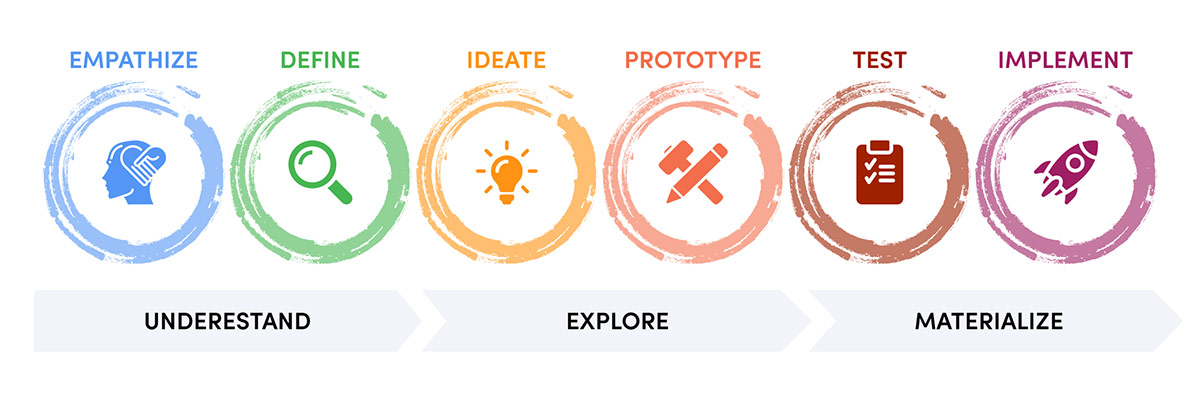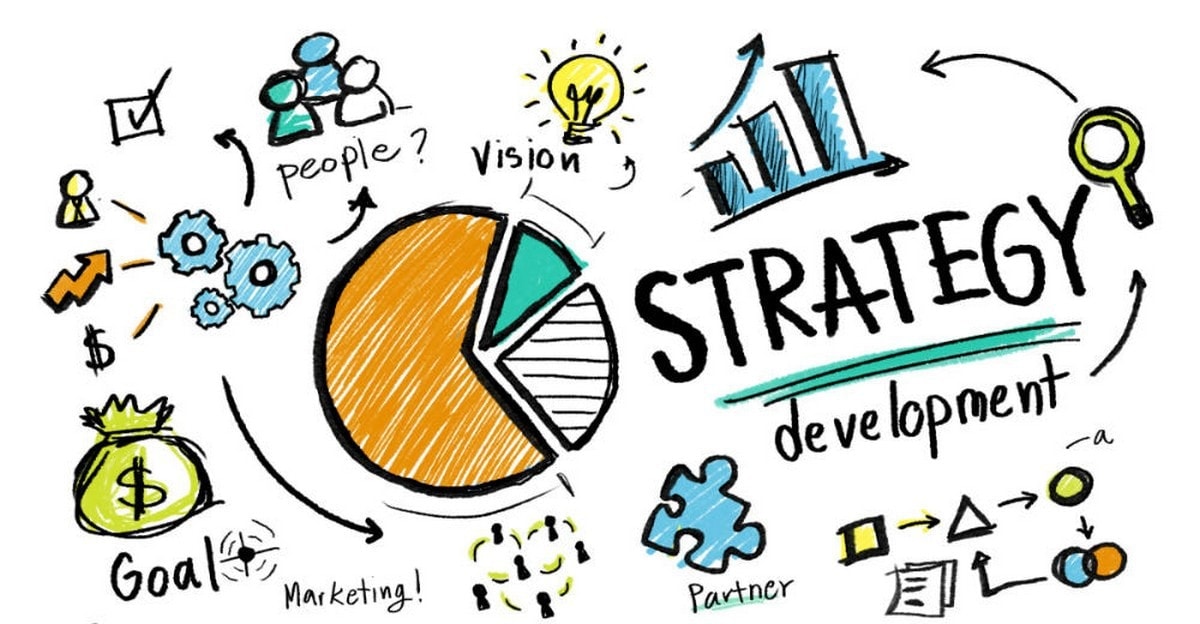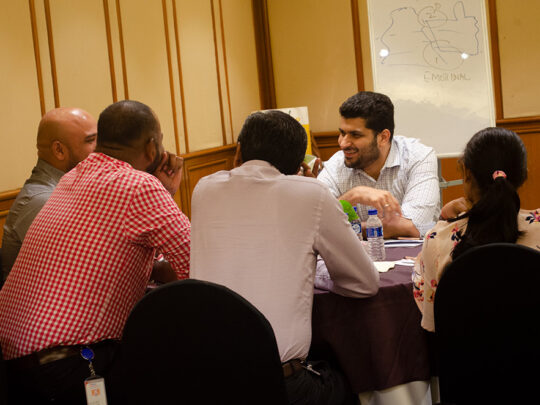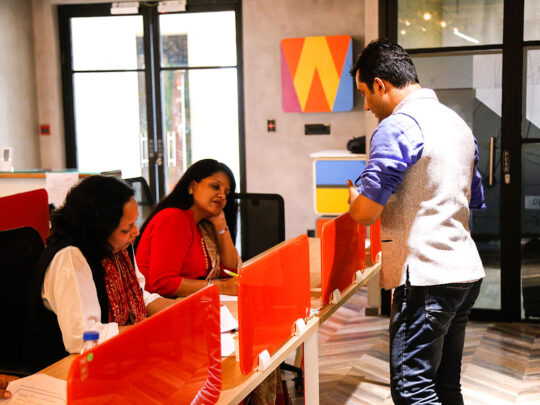When you apply design principles to innovation and strategy, it drastically improves the success rate for innovation. Many Design-led industries have outshined the S&P 500 over ten years remarkably by 211% as recorded by the Design Value Index 2015 established by the Design Management Institute and Motiv Strategies. A great design carries an oomph factor that makes the services of the products more desiring and appealing to the users.
The old top-down corporate strategy model is no longer effective. It frequently misaligns companies, provides flimsy, generally ignored guidance, and fails to follow through. Senior executives immersing themselves at a strategy retreat, developing a vanity deck, and expecting it to fit in when they return seems outdated. You can call it an elaborating affair, but it does not help change complex circumstances.
Design is a formal response to a strategic question. – Mariona Lopez
However, when Design comes into the picture with reimagining strategy, it is transformative that helps leading industries create value. It has changed the definition of innovation, and now it has become design-driven from being engineering-driven. It is user-centric, and user-experienced focused. An increasing number of CEOs now take Design Thinking as the core of organizational change and strategic development.
What is Design Thinking?

Design Thinking is a blend of imagination, logic, systemic reasoning, and intuition that explores the possibilities to create desired outcomes that make it easier for the end-users. A design mindset never focuses on the problem but the action-oriented solution. It includes both imagination and analysis. Design Thinking is all about providing an improved future by paving the way through ideas.
Human-centred innovation is driven by design thinking, which begins with gaining customers or users understanding of unmet or unarticulated requirements. The ultimate goal of design is to improve people’s and the planet’s quality of life. The most powerful driving force is the increased rate of change in business and society through technological advancements. Complexity escalates as firms become increasingly software-driven and the rate of change accelerates.
What is Strategy?

Competitive analysis that includes competitive intelligence is a great beginning for developing a strategy. While defining your core strategies, it is crucial to bring your core competencies to the light. It helps meet the unmet needs of your end-users effectively. A well-put strategy charts the course of any business. There are numerous theories and ways that all strive to be the greatest. It is always about finding the right fit and commitment to make it work.
What is a Design Strategy?

Design strategy is the border where Design Thinking and strategy meet to distinguish what is profitable for business and valuable for customers. It comprises a set of principles that bring together the business mission and vision with the product or service design. It gives the business a guided path to reach the next level.
If you have a design strategy right, your team will concentrate on the features that strike the optimal balance between high reward and low work, resulting in the greatest amount of value for the greatest number of customers. It’s a more long-term strategy for generating revenue.
A design strategy will assist your company in determining what its next — and subsequent — steps should be. This clarity will help you make better decisions and acquire a strategic advantage.
Why Does Conventional Approach to Strategy Fail?

The conventional planning process’ most evident flaw today is that it was for a stable and predictable environment. However, most firms no longer have it. It is unprepared for industry disruptions, the dismantling of value chains, the emergence of entirely new business models, and other business environment changes. Here are some of the reasons for experiencing failure in the process.
- Excludes the stakeholders: There is a crucial need of giving weightage to the insights of the competitors, customers, and employees when it comes to values, trends creating an industry, alternatives, and market. As it is missing in the conventional approach.
- Excludes the complexity: There’s far too much going on for a group of people gathered into a room for a few days to comprehend all of the critical aspects driving an organization’s performance.
- No buy-in: New initiatives must include those who will carry them out. Otherwise, they’ll oppose the seeming chances without any visible benefits.
- Challenging to implement: The initiatives do not address the human and organizational factors but end up implementing them.
- Rigid and static: In the ever-changing world, it is dangerous to propose a strategy for the next five years.
Strategy today necessitates more than a conventional strategic advantage. It necessitates making well-coordinated decisions about which opportunities to pursue; the business model with the highest potential for creating value; how to capture as much of that value as possible; and the implementation processes that assist a firm in adapting activities and building capabilities that enable it to realize long-term value. A strategy can lose track if the organization ignores any of these imperatives.
What is the Need to Reimagine Strategy?

When a strategy becomes obsolete or stale, and when there is no way to break the ice of this never-ending loop, the organizations find new ways to reimagine those strategies. It is where Design Thinking and Reimagining Strategy come together to create a powerful tool to revitalize and rethink strategy.
Design thinking may help leaders reframe critical strategic challenges facing their businesses and radically shift their thinking about strategy by putting customers’ requirements at the core of a product, service, process, or business model. This technique emphasizes right-brained creativity with left-brained analytics, allows executives to reimagine their strategy, discover new chances for innovation, and acquire inspiration.
What are the Benefits of Reimagining Strategy Using Design Thinking?

It promotes a culture of creative transformation, ignites breakthrough innovation, and increases your company’s competitive advantage as you apply the newest Design Thinking concepts and technologies to solve the complex problems.
- You can develop innovative solutions by practising Systematic Inventive Thinking (SIT) to get past the relational and functional immobility.
- By creating outlines and aligning prototypes to venture into complex problems.
- Build Design Thinking capabilities by tolerating failure and risk to boost innovative thinking.
- By fostering a culture to bring change.
- By bringing together the concepts of Design Thinking and strategic approach.
- Generate empathy with the end users by getting a note of their behaviour.
- The driving force for any business decision is the end-user.
You can reframe strategic problems and produce more effective solutions by putting consumers’ requirements at the heart of a product, service, process, or business model. Design thinking allows you to widen your strategic perspective, identify new chances for innovation, and keep your organization going forward by combining right-brained creativity and left-brained analytics.
What are the Steps of Strategy Design?

The goal of strategy has always been to bring the entire business together behind a single goal. It must now expand to include an integrated set of decisions concerning the business model, competitive positioning, and skills needed for long-term success. A successful way to continually renew strategies is to keep implementing these steps in the process.
1. Dialogue
Any approach must begin with a conversation with your value constellation. You’ll gain vital insight into the trends and changes affecting your sector. You’ll delve deeper into the actual value your customers obtain from your product or service, as well as chances to provide even more value.
2. Vision
You’re ready to build out your vision once you’ve acquired knowledge from your value constellation. A vision is a way to announce where you are headed as an organization.
3. Explore
It is a must to explore a broad spectrum of options before setting your mind on a particular path, as it may lead you to some promising opportunities to pursue. It is not about sticking to one firm decision but seamlessly moving across different choices to choosing the right options.
4. Create
It is time to choose your desired path and get to the bottom of the specifics now that you have insight and vision for your choices. You can include the available resources, a roadmap, focus areas, and specific projects to your vision.
5. Implement
The strategy that resonates with the organization’s structure and nature, is upheld in the long term. You’ll need everyone on board and a purpose-built organization to implement your plan and accomplish your vision.
There is no end to the process of disruption. You can only stand out in the competition when you bring together a responsive strategy and concentrate on the customer value through following Design Thinking principles.
Source: https://www.creativityatwork.com/design-thinking-strategy-for-innovation/
https://chiefexecutive.net/wp-content/uploads/2019/01/Webp.net-resizeimage-44-1024×683.jpg
https://d2r9nfiii89r0l.cloudfront.net/article/images/740×500/dimg/dreamstime_s_37101277_1.jpg
https://elements.envato.com/concept-of-business-strategy-PWAKS88
https://elements.envato.com/cut-outs-of-paper-man-climbing-the-steps-to-succes-JPYS5X9
Written by: Jimmy Jain & Afreen Fatima
Society of Design Thinking Professionals




























